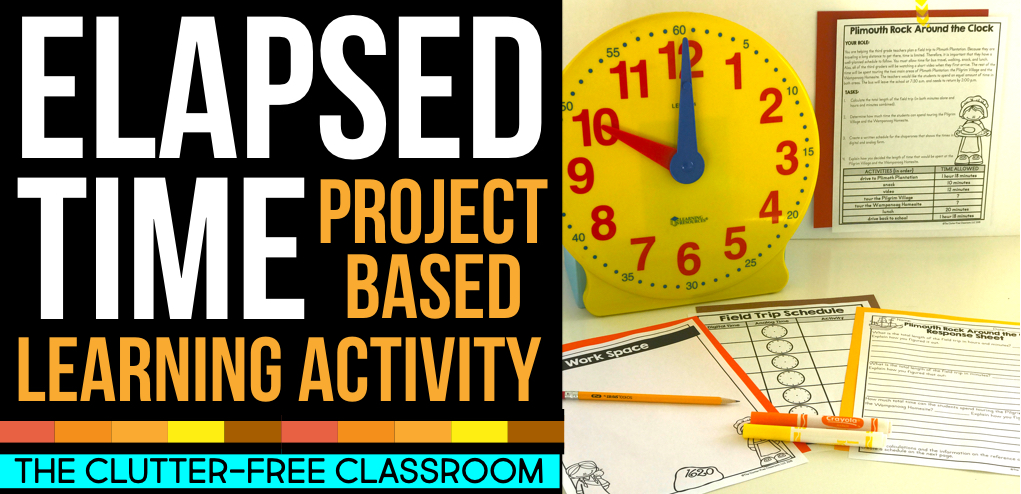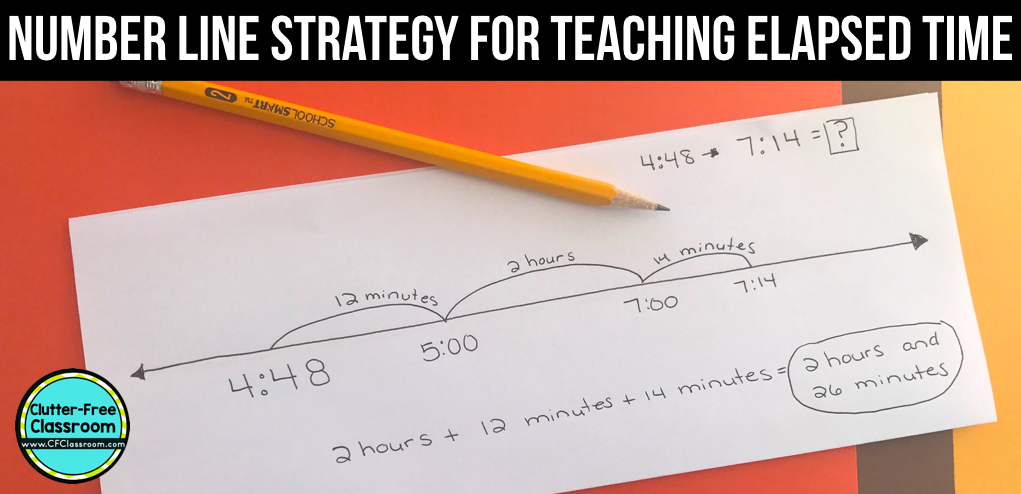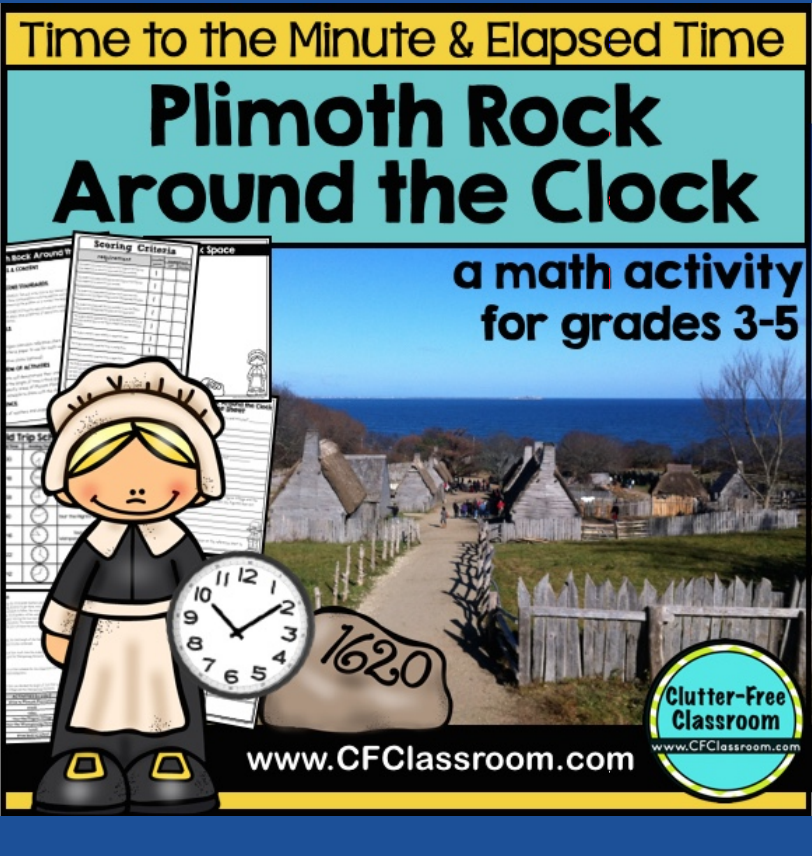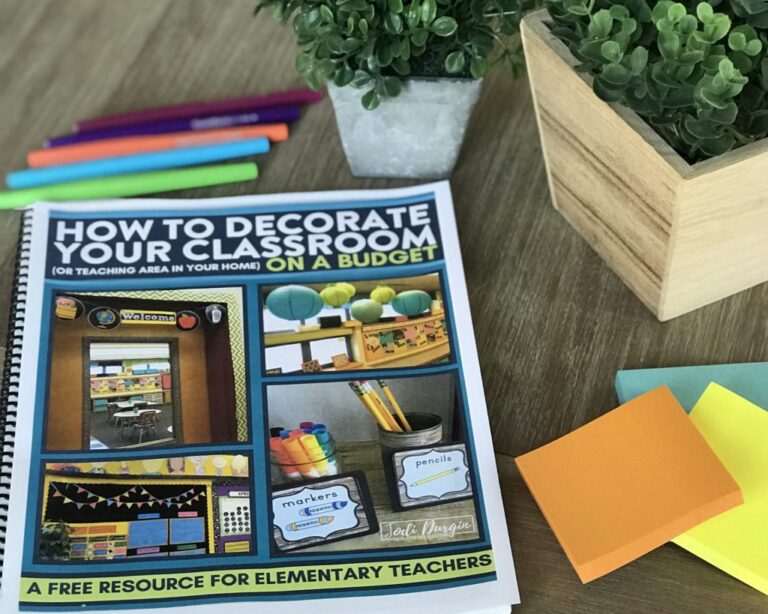Teaching elapsed time can be very difficult. It is a hard concept for elementary students to grasp. In all honesty, it can be one of the more challenging math skills to teach. Spending nine years teaching third grade gave me ample opportunity to experiment with different methods of teaching elapsed time. There are several strategies students can use to solve elapsed time problems, but the one I find to be most efficient by far is the open number line.
An open number line is effective and useful in so many areas of math. I use it when teaching children how to add, subtract, round numbers, work with money and calculate measurements. It is a visual tool that helps them to truly understand the concepts.
Open number lines are especially helpful when teaching your kids how to figure out the amount of time passed. It can be used to determine both the time that has elapsed between two given times, and also to use a specific time and a given number of hours and minutes that have gone by to figure out a starting or ending time for an event.
This post will answer the following questions about teaching elapsed time:
- What is elapsed time?
- What skills do students need to master before learning elapsed time?
- When should elapsed time be taught?
- How do I teach elapsed time to my students?

What is Elapsed Time?
Elapsed time is how much time goes by from one time to another. It is an important math skill to have in the real world.
What Skills Do Students Need Before Learning Elapsed Time?
Before students can calculate elapsed time, they need to be proficient in the following mathematical concepts:
- read time on analog clocks
- read time on digital clocks
- write analog time
- write digital time
- add and subtract fluently
- convert minutes to hours
- convert hours to minutes
When Should Elapsed Time be Taught?
Once students are proficient in the above skills, the concept of elapsed time can be introduced. It has proven to be one of the more challenging math concepts for kids to master so they will need repeated practice and exposure throughout the year.
I strongly advocate for using a spiral review approach to teaching all math skills. Children progress at different developmental rates and it is not effective to teach a “math unit” and then move on to the next ones without spiraling back throughout the year.
For this reasons, in combination with the fact that I felt WAY too much time was being wasted on test prep each spring, I created a yearlong series of spiral review print and go activity pages that have since proven to be effective in thousands of classrooms. I have used them for morning work (or bell ringers as some parts of the country refer to them), homework, as independent practice during math workshop while I do guided math with other students, as assessments, and I also include them in my substitute teacher plans.
So the long story answer to the question, “When should elapsed time be taught” is all year long. However, the short answer is ‘once the students have mastered the foundational skills needed to calculate elapsed time.’ The really short response is that I have always taught in in late October and early November in third grade.
Because of that timing, I created an Elapsed Time November Activity that applies the skill in a real-world situation. I made it to complement our unit study of The Pilgrims, the Wampanoag Native Americans, and the First Thanksgiving. This specific activity had students planning a field trip to Plimouth Plantation which is a living history museum showcasing how the Pilgrims and Wampanoag People lived in the 17th century. You can learn more about this resource below.
3 Tips for Teaching Elapsed Time
Below are 3 ideas for teaching elapsed time in your elementary classroom.
1. Use an Open Number Line
Follow these steps for how to use the open number line strategy for reaching elapsed time:
- Have the student draw an open number line.
- Record the starting time on the far left.
- Teach them to make jumps to “friendly, landmark” times.
- Record the time you land on under the number line and record the amount of time that has elapsed above the jump.
- Once you progress to the end time, simply add up the increments of minutes above the jump, and if necessary, convert those minutes into hours and minutes.

2. Use Project Based Learning Activities
This Plimoth Rock Elapsed Time project based learning task is a great learning opportunity for elementary students. To complete the activity, students must create a schedule for a class field trip and answer related questions. They need to tell time to the minute, convert minutes and hours, calculate elapsed time, and record time both digitally and in analog form.
In my classroom, I used this activity as a guided math lesson with small groups of students, as enrichment for my advanced math students, and as a performance-based assessment on elapsed time. This is one of my favorite November activities for kids!
This elapsed time packet includes the following:
- Task assignment/overview
- Thematic paper to show their work
- Response sheets to get them explaining their thought process
- Blank schedule for them to complete (by recording the events, digital and analog time)
- Scoring rubric
- Answer key
3. Offer Practice Opportunities throughout the Year
As I mentioned above, I am a strong advocate for using a spiral review approach for teaching all math skills. It is not best practice to teach a “math unit” and then move on to the next one without ever mentioning the previous math topic again during the school year.
There are three main reasons students benefit from a spiral review. First, students need regular practice with key concepts and skills because it helps them maintain foundational skills. Second, It’s even more important for students who did not achieve proficiency with a concept or skill when it was first taught. Students develop at different paces and that’s totally okay. Practicing the concept or skill throughout the school year gives them many opportunities to continue to work towards proficiency. Third, spiraling promotes confidence amongst students because they are familair with the content.
For these reasons, in combination with the fact that WAY too much time is being wasted on test prep every spring, these yearlong series of spiral review print and go activity pages are an essential component of math instruction. One of the many topics covered throughout this resource is elapsed time.
In closing, we hope you found this post about teaching elapsed time helpful!






